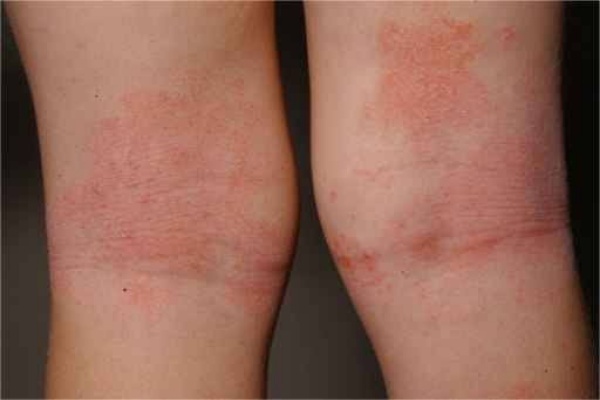Atopic dermatitis (DA) is a chronic, recurrent skin inflammation, accompanied by severe itchiness, dry skin in particular areas of the skin. It most often occurs in early infancy as well as early childhood. More than 10 percent, DA may last to adulthood. DA is associated with decreased skin barrier function, decreased ceramide levels and increased levels of endogenous proteolytic enzymes, which raises Transepidermal Water Loss (TEWL) indicated by skin dryness.
TEWL is an amount of water per unit area of skin and per unit of time exiting the body through the skin into the atmosphere through diffusion and evaporation. The normal value of TEWL in children is 0-15 g / m 2 / h (gram / square meter / hour).
Increased pH and TEWL in DA patients show impaired skin barrier function and causes a variety of skin disorders in the form of dry skin both in the lesion and non-lesion areas. The condition of non-lesion areas in DA has not caused specific clinical manifestations yet following the distribution of DA patients, so it is necessary to measure pH and TEWL to determine how much damage the skin barrier causes, although it has not yet shown clinical manifestations of DA.
Previous studies comparing skin pH of DA patients and healthy children were conducted by Primardiati in Surabaya. There was a significant increase between the pH value in DA patients compared to the pH value in healthy children. There were also significant differences found in the area of lesions and non-lesions. Research on pH and TEWL in pediatric DA is still rarely done in Indonesia, thus encouraging researchers to find out the pH and TEWL values in pediatric DA patients both in the lesion and non-lesion area to measure pH and TEWL can be parameters in evaluating the skin barrier function and used as a consideration for additional DA therapy in children.
This research is a descriptive observational study with cross-sectional method aimed to determine the pH and TEWL values in DA patients in Dr Soetomo Hospital Surabaya. This study used consecutive sampling by taking every pediatric patient diagnosed with DA and fulfilling the criteria for receiving samples at Outpatient Clinic of Pediatric Dermatology and Venereology Division Dr. Soetomo General Hospital Surabaya with a total sample of 20 DA patients.
In this study, the results of pH measurements on children DA skin showed that the median pH in the lesion area was 6.54 and the non-lesion area’s pH was 5.38. Comparison test with Wilcoxon Signed Ranks Test was carried out to find a significant difference in the pH value of the lesion area and non-lesion area. The results of this study indicated that the pH value in both the lesion area and non-lesion area has increased compared to the normal pH value in healthy children It indicates that in patients with AD there is a disruption in the skin barrier.
In this study, the results of TEWL measurements on children’s DA skin showed that the value of TEWL in the lesion area was 22.51 ± 5.37 and in the non-lesion area was 16.04 ± 5.2. The conducted paired t-test showed a significant difference between the value of TEWL in the lesion area and non-lesion area. The results of this study showed increases in TEWL values in both lesion and non-lesion areas compared to the standard TEWL value in healthy children. It indicates disturbance in the skin barrier of patients with AD.
The results showed that the lesion area of SCORAD degree was related to pH and TEWL with a p-value at pH 0.024, and p-value at TEWL was 0.022. In the lesion area pH is related to TEWL with a value of p = 0.001. It showed that there is a significant correlation between increasing the degree of SCORAD to the pH and TEWL values. In the non-lesion area, the Pearson test was used because the data were normally distributed, the degree of SCORAD was related to pH, and TEWL with the p-value of pH was 0.022, and the p-value of TEWL was 0.002.
The results of this study have proven that even in non-lesion areas of DA patients, skin barrier disorders have occurred, marked by an increase in the degree of SCORAD that will affect the increase in pH and TEWL values. In the non-lesion area, there was no relation between the pH value and TEWL with p = 0.091.
The pH and TEWL values in the lesion area were higher than in the non-lesion area. The degree of SCORAD is related to pH and TEWL. The higher the degree of DA, the higher TEWL and pH both in the lesion area and non-lesion area. (*)
Author: Iskandar Zulkarnain
Details of research available at :https://e-journal.unair.ac.id/BIKK/article/view/12480/pdf





